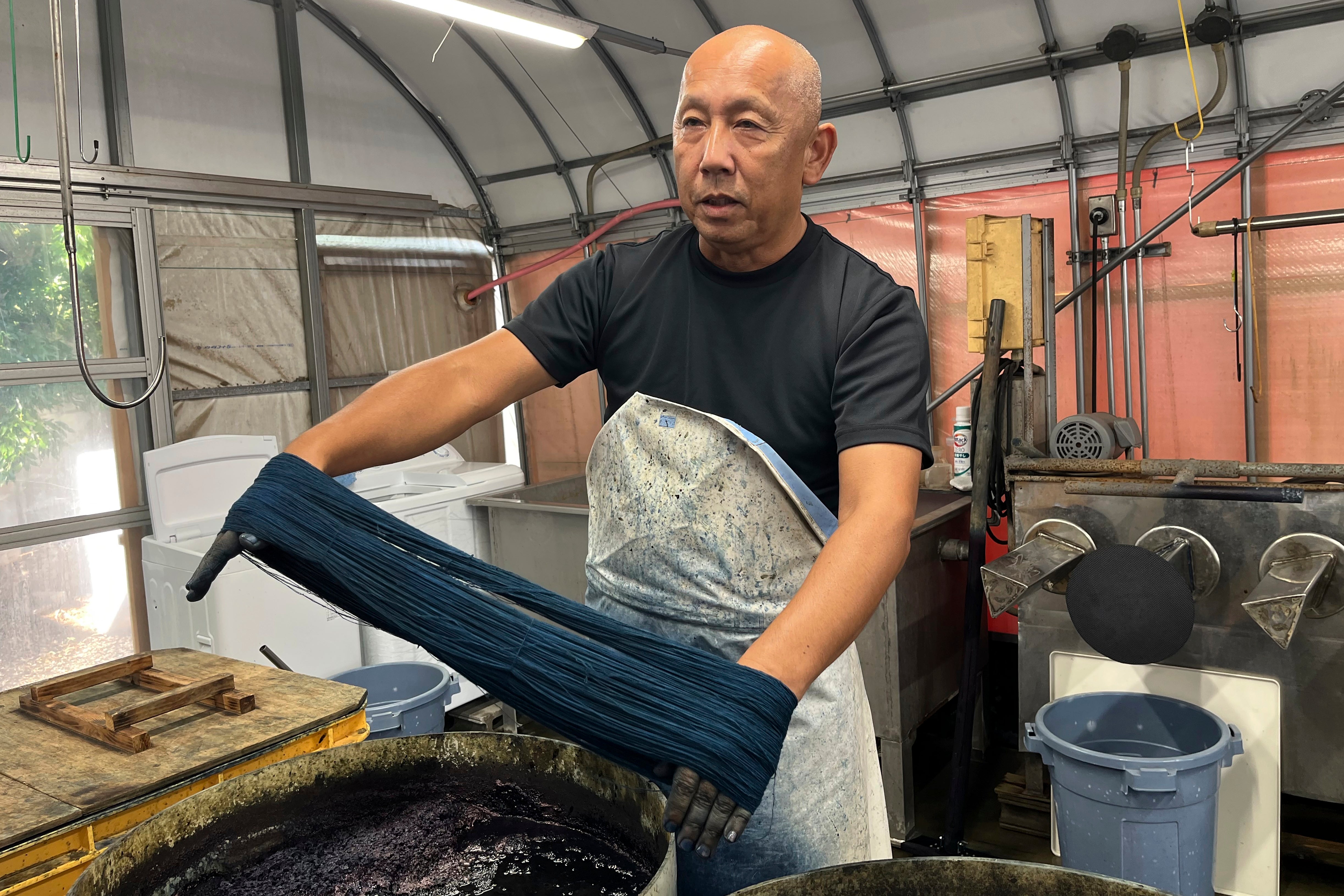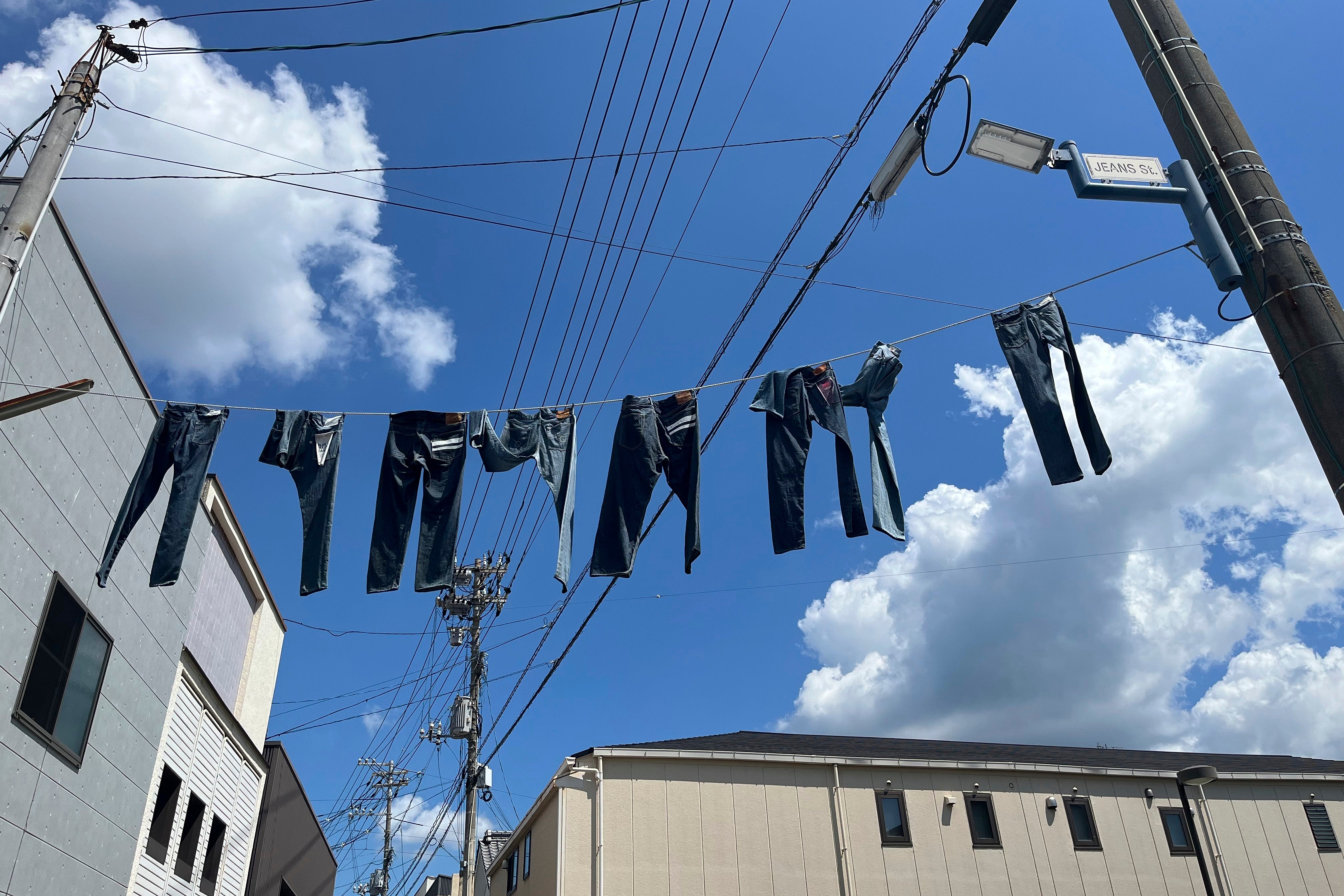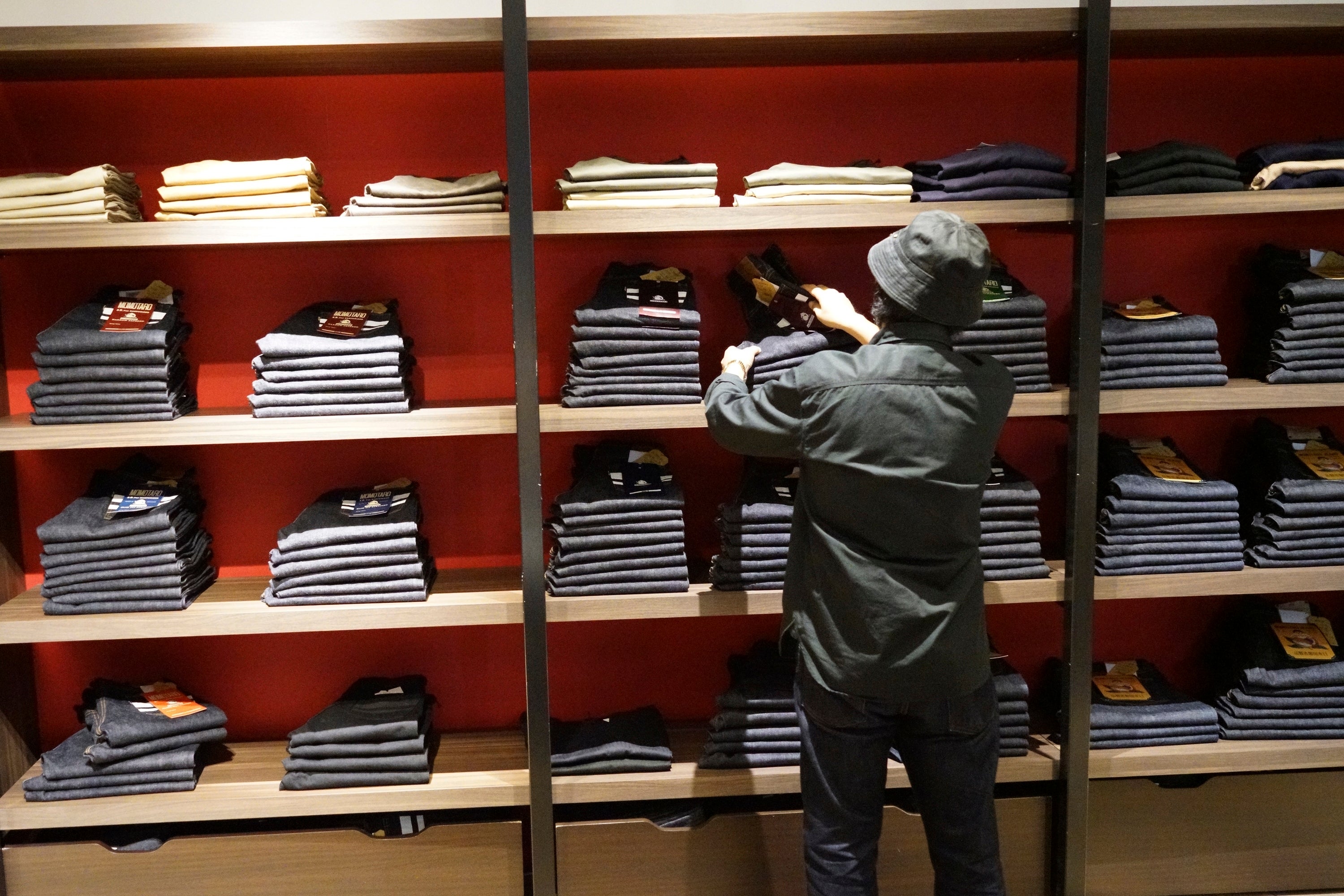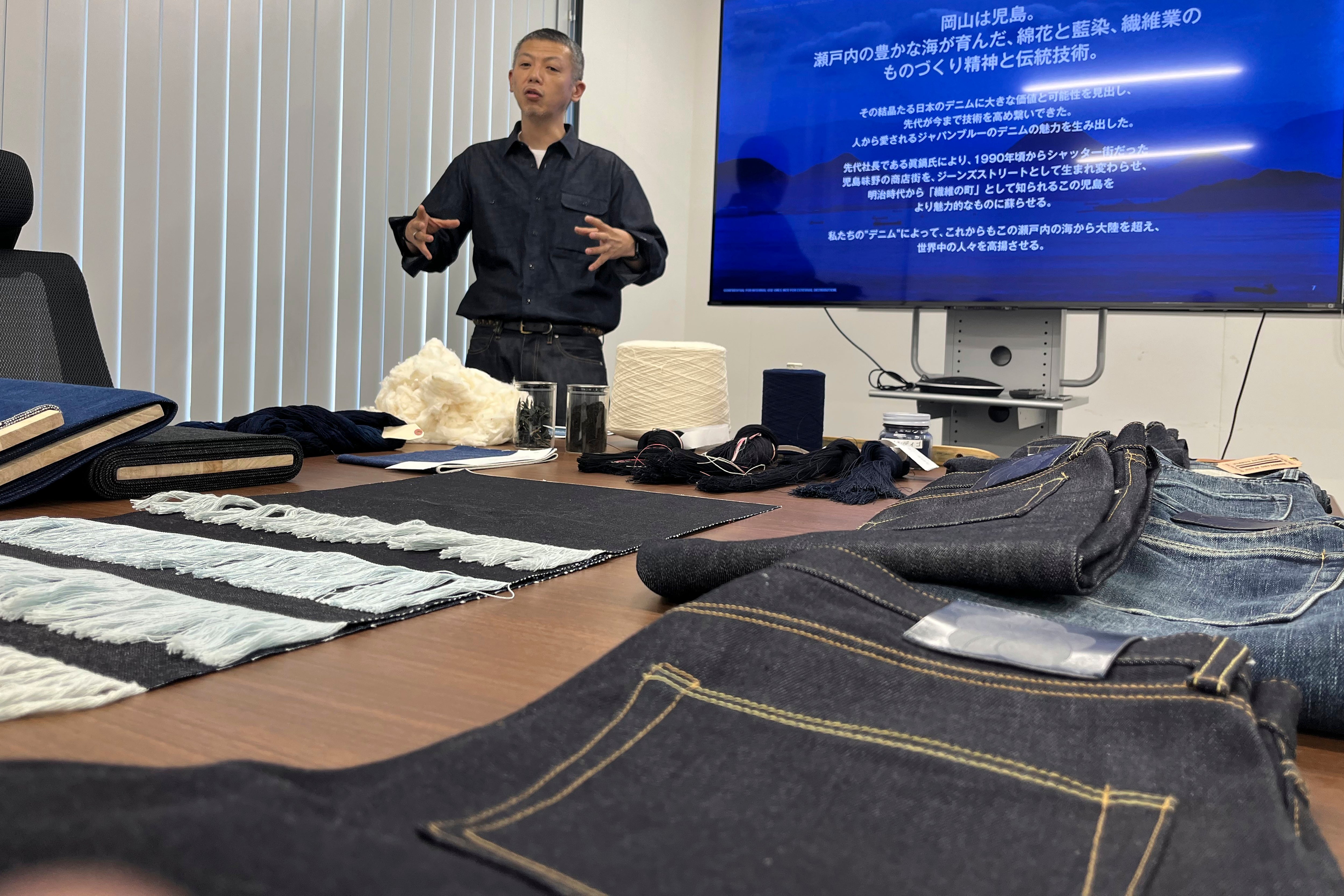Jeans Street: Japan’s denim Mecca is drawing in cowboys and hipsters alike
The area, including a street named Jeans Street, draws about 100,000 visitors a year

Your support helps us to tell the story
From reproductive rights to climate change to Big Tech, The Independent is on the ground when the story is developing. Whether it's investigating the financials of Elon Musk's pro-Trump PAC or producing our latest documentary, 'The A Word', which shines a light on the American women fighting for reproductive rights, we know how important it is to parse out the facts from the messaging.
At such a critical moment in US history, we need reporters on the ground. Your donation allows us to keep sending journalists to speak to both sides of the story.
The Independent is trusted by Americans across the entire political spectrum. And unlike many other quality news outlets, we choose not to lock Americans out of our reporting and analysis with paywalls. We believe quality journalism should be available to everyone, paid for by those who can afford it.
Your support makes all the difference.Jeans flap like flags over the town of Kojima, Japan as denim draws in fashion-tourists from across the world.
Some would call this spot in southwestern seaside Okayama Prefecture a mecca of jeans, where fans from around the world make pilgrimage.
The main road is even named Jeans Street.
The soda vending machines at the train station are plastered with the image of jeans. The roads are painted blue, with the lines at the edges pink and white, the trademark of Kojima jeans’ seams.
With some 40 jeans manufacturers and stores, including denim-themed cafes, the area draws about 100,000 visitors a year, according to the Japan National Tourism Organization.
Japanese jeans tend to be high-end, dark and durable. Although a tiny part of the global jeans market, they have carved out a niche with a reputation for craftsmanship. Kojima gave birth to popular brands like Big John, with roots dating to the 1940s, and now supplies international fashion brands, including Gucci.
“The Japanese industry has established a way of looking at denim from a much more connoisseurship and collecting approach” than a mass marketing one, says Emma McClendon, assistant professor of fashion studies at St. John’s University in New York.

In Kojima, you might be in for a disappointment if you expect the glamour of a fashion center. Jeans Street is quaint and uncrowded. Each company in the region is relatively small, hiring about 100 people.
What you will find are people taking pride in “monozukuri,” or “making things,” connoting a devoted, laborious attention to detail. It’s an ethic entrenched throughout Japan, from big carmakers to the local tofu store.
“More like making a kimono” is the way Yoshiharu Okamoto, a dyeing craftsman at Kojima-based manufacturer Momotaro Jeans, puts it.
His hands and nails are tinged blue from dipping threads of Zimbabwean cotton into a big pail of dye.
He knows by smell and feel the right state of the indigo, which he compares to a living thing. He swears it’s a 365-days-a-year job, as the dye has to be checked and mixed every day.
“It’s not that easy to get this special color,” Okamoto told The Associated Press during a recent tour of the production facilities. “It’s my life.”
The dark indigo hue of Made-in-Japan denim, much of it hailing from Kojima, is so distinctive it has earned the name “Japan blue,” also known as “tokuno blue,” which translates to “especially concentrated blue.”

Jeans made here aren’t cheap, ranging in price from a relatively affordable 33,000 yen ($230) per pair to those made by top craftsmen, which go for 200,000 yen ($1,400) or more.
Thomas Stege Bojer, founder of Denimhunters, an online site devoted to denim, says Japanese brands use “raw denim” that ages well and lasts a long time. He echoed the “ slow clothing” movement that has arisen in reaction to cheaper, mass-produced clothes.
“We just make too many clothes. The cycle is too fast, I think, and we need to slow down,” Bojer said from his home near Copenhagen, Denmark, where the walls are decorated with jeans.
As McClendon, the fashion professor, put it, the Japanese industry is "shifting the conversation around jeans to be about heritage elements, about educating consumers on historical details as a form of quality.”
Momotaro Jeans, for instance, come with a lifetime warranty: Tears and other problems get fixed for free, within reason. Japan Blue Co., which runs Momotaro, a brand that debuted in 2006, said annual sales totaled about 1.6 billion yen ($11 million) for the latest year. About 40% of sales come from outside Japan.

Like craftsman Okamoto, Shigeru Uchida, a loom specialist, and Naomi Takebayashi, who works at a sewing machine, believe they have special skills they must guard and hand to the next generation. They spoke while leading a group of younger sewers.
The two say they have a special relationship with their machines. They listen to the machines' sounds to make daily adjustments.
The clattering power looms are vintage Toyodas, from the weaving company that preceded automaker Toyota. Spare parts are hard to find. There is one loom operated by hand, used for products that the company says boast a unique texture.
Masataka Suzuki, president and chief operating officer at Japan Blue, says the industrial history of the region is a source of strength, centered around sewing heavy fabrics, including military clothes and obi sashes for kimonos, as well as the cotton and indigo-dyeing native to the area.
That’s why the jeans are for life, Suzuki said, fading and creasing, depending on how they’re worn and how the wearer lives.
“We want to create a product that is a testament to a person’s life,” he said.